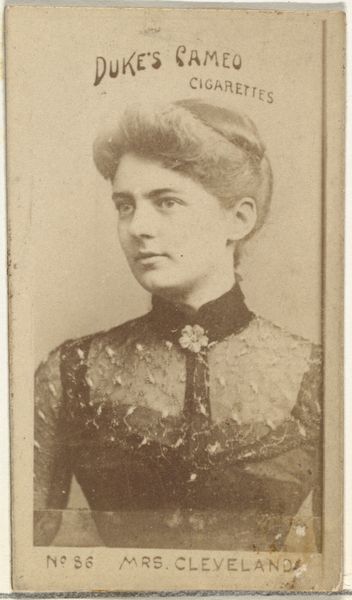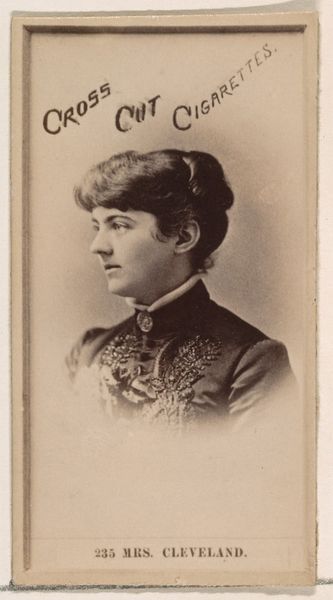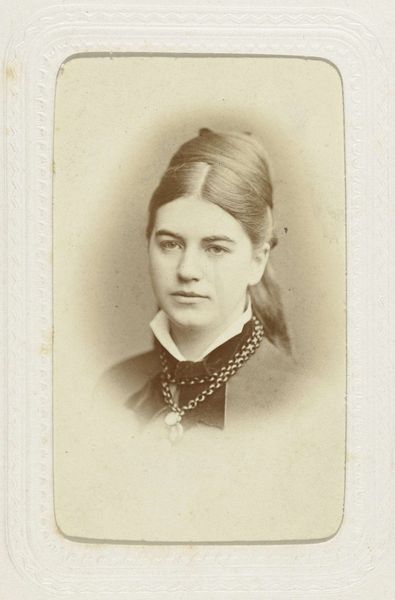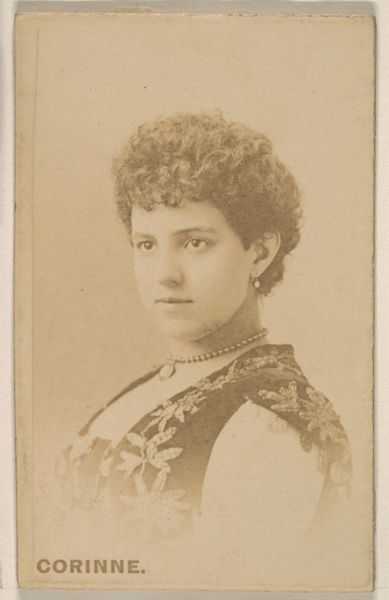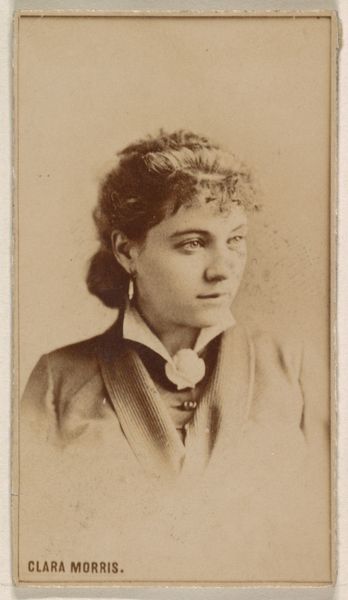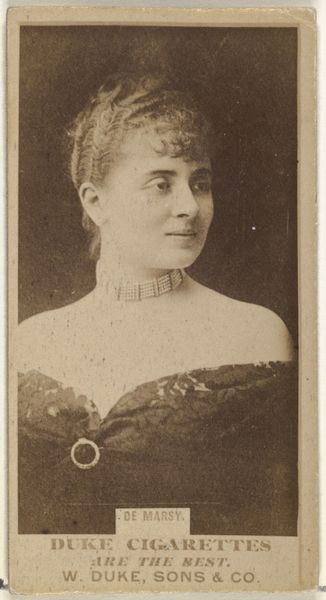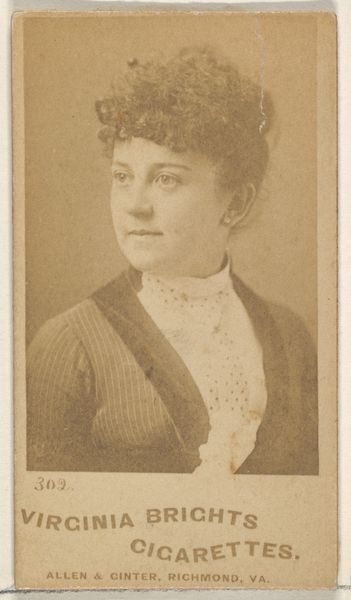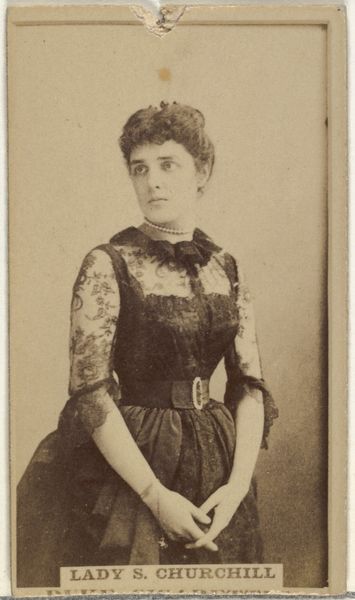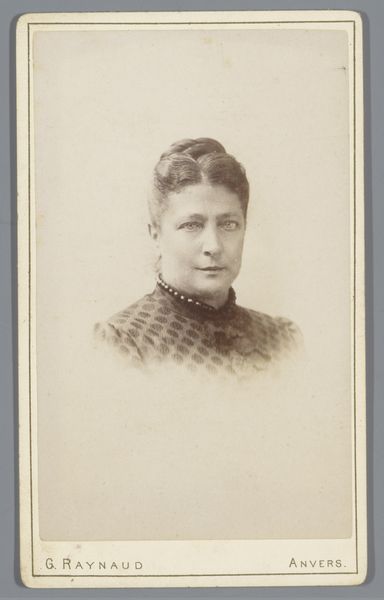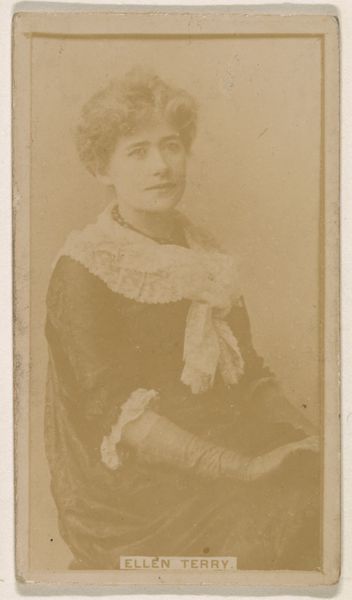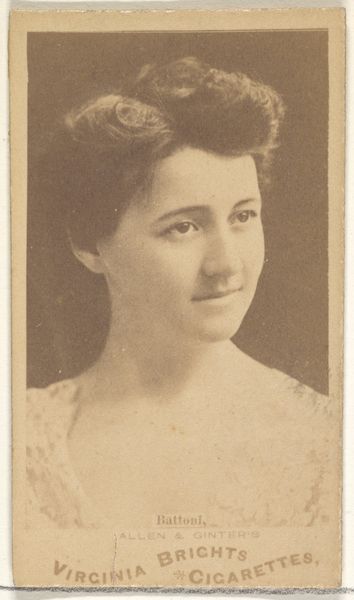
Card Number 149, Mrs. Cleveland, from the Actors and Actresses series (N145-6) issued by Duke Sons & Co. to promote Duke Cigarettes 1880s
0:00
0:00
print, photography, albumen-print
#
portrait
# print
#
photography
#
albumen-print
#
realism
Dimensions: Sheet: 2 11/16 × 1 3/8 in. (6.8 × 3.5 cm)
Copyright: Public Domain
Editor: Here we have a card, circa 1880s, titled "Mrs. Cleveland." It was created by W. Duke, Sons & Co. as part of the Actors and Actresses series using albumen-print photography. It’s small, like a playing card. What can we say about this object as an artifact of its time? Curator: Well, first off, the Duke company wasn’t making art. They were in the business of mass-producing cigarettes. The card itself is less about Mrs. Cleveland and more about using her image to sell a product. What was the purpose and the cost to produce something like this in the 1880s, considering material value? Editor: So the albumen print, that specific photographic process, it’s part of this whole system of production? How does the process itself shape the final image and its meaning? Curator: Exactly! Albumen prints were relatively cheap to produce, which made mass production like this possible. Consider the labor involved, the materials sourced—this isn't just a portrait; it’s a product of industrial capitalism, using Mrs. Cleveland's fame to fuel consumerism. Look how “Duke Cigarettes are the best” are literally on top of her head, branding the sitter. Editor: It’s interesting how the cigarette company used the likeness of a celebrity to promote a mass-produced commodity. This recontextualizes portraiture to one of mere trading cards to be consumed by all. Curator: Yes. It's a stark contrast to traditional portraiture. The materiality and method of production of the print democratizes portraiture into affordable photographs to be collected and traded in exchange for boosting Duke’s branding and selling tobacco products. Where can the line between art and a commodity for trading be drawn? Editor: That definitely changes how I view this “portrait.” I never considered how the cigarette industry and photographic processes of the time could intersect in such a revealing way. Curator: Right. Analyzing art through the lens of production really opens up a new way of appreciating the relationship between art, society, and industry.
Comments
No comments
Be the first to comment and join the conversation on the ultimate creative platform.
